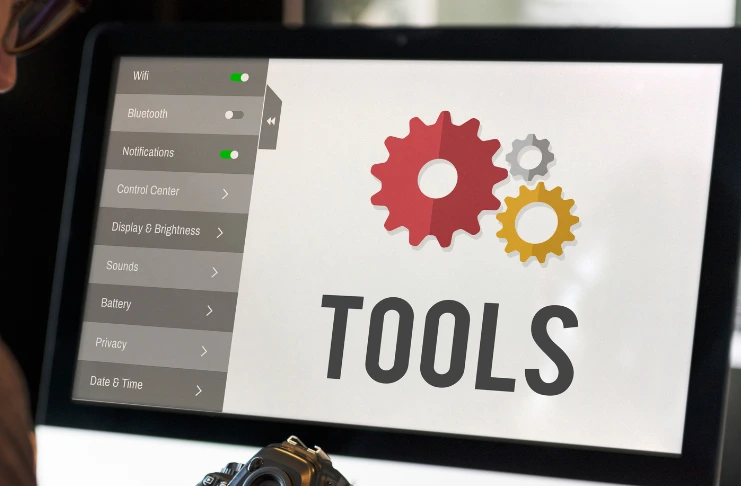Effective inventory management is one of the most overlooked yet impactful ways to effectively manage restaurant inventory and optimize restaurant operations. From tracking raw materials to reducing waste, your inventory system directly influences food costs, customer satisfaction, and profit margins.
This guide will walk you through everything you need to know about food inventory management and how to manage restaurant inventory effectively. You’ll discover time-tested restaurant inventory best practices, practical inventory for restaurant examples, and a checklist to help streamline operations and protect your bottom line.
Introduction to Restaurant Inventory Management
Inventory management is the systematic approach to sourcing, storing, and using a restaurant’s inventory—everything from raw ingredients to cleaning supplies. It ensures you always have what you need, when you need it, without overspending or running out during peak hours.
Whether you run a cloud kitchen, fine-dining restaurant, or food truck, mastering inventory is critical. Poor inventory systems lead to waste, theft, unhappy customers, and eventually, shrinking profits.
In this guide, we’ll explore the importance of proper inventory management and provide actionable strategies to help you run a more profitable and waste-free operation.
Why Inventory Management Is Crucial in the Restaurant Industry

Managing restaurant inventory goes beyond tallying ingredients; it includes tracking inventory to influence purchasing decisions, pricing strategies, and customer experience. It influences purchasing decisions, pricing strategies, and customer experience. Here’s why it matters more than most operators think:
INDUSTRY INSIGHTS
| According to Investopedia, effective inventory management is crucial for restaurants, especially given their reliance on perishable goods. The inventory turnover ratio, calculated by dividing net sales by the average cost of inventory, is a key metric. A significantly higher ratio than industry averages may indicate insufficient inventory purchases, risking shortages, while a substantially lower ratio might suggest over-purchasing, leading to potential food spoilage and declining quality. Maintaining appropriate inventory levels ensures freshness, reduces waste, and supports overall operational efficiency. By closely monitoring inventory turnover and adjusting purchasing strategies accordingly, restaurant managers can optimize stock levels, minimize waste, and enhance profitability. |
- Cost Control: Inventory waste accounts for up to 10% of total food costs, per the National Restaurant Association. Poorly tracked stock leads to overspending and spoilage.
- Menu Consistency: Running out of ingredients mid-service can compromise quality and consistency, which is key to customer loyalty.
- Theft Prevention: Without accurate tracking, employee theft or “portion creep” often goes unnoticed.
- Operational Efficiency: Well-managed inventory allows the kitchen to operate smoothly with minimal delays or surprises.
Ultimately, proper inventory control leads to tighter margins and stronger financial health—two goals every restaurateur strives for.
Types of Inventory Every Restaurant Should Track

A restaurant’s inventory goes far beyond what’s stacked on the kitchen shelves or stored in the walk-in fridge. It encompasses everything required to run the kitchen and serve customers—from raw ingredients to cleaning supplies. Grouping inventory into specific categories simplifies tracking, helps manage inventory levels, reduces ordering errors, and ensures nothing crucial slips through the cracks.
1. Raw Ingredients
This category includes all the foundational items used in food preparation—vegetables, grains, meats, seafood, dairy, and more. These are typically perishable and have shorter shelf lives, making them high-risk for spoilage. Proper rotation, labeling, and storage are key to maintaining freshness and controlling food costs, which ultimately helps reduce food waste. For example, a missed inspection of a meat delivery could lead to waste worth hundreds of dollars or even a failed health audit. Tracking raw ingredients closely helps reduce waste, ensure food safety, and protect your margins.
2. Beverages
Whether your establishment serves smoothies, sodas, or a curated list of wines and craft cocktails, beverage inventory is a category of its own. Alcoholic beverages especially carry high margins and require strict control due to licensing regulations and the risk of theft or overpouring. Monitoring open bottles, keg usage, and restock schedules ensures your bar operates profitably. On the non-alcoholic side, seasonal trends (like iced lattes in summer or hot cocoa in winter) affect stock needs and planning cycles.
3. Prepared Items
Many kitchens prepare sauces, dressings, or partially cooked meals ahead of time to streamline service during busy hours. These “prep items” must be accounted for in your inventory system as they represent both labor and ingredient investment. If improperly stored or forgotten, these can quietly become a source of waste and a health risk. Tracking batch numbers, prep dates, and expiration timelines ensures these items are used efficiently and safely.
4. Disposables and Packaging
Items like paper napkins, plastic forks, to-go containers, cup sleeves, and delivery packaging are critical to guest experience—especially for QSRs, cafés, and cloud kitchens. Though inexpensive individually, overuse or disorganized restocking can quietly drain hundreds of dollars each month. These items also fluctuate based on order volume and type (e.g., dine-in vs. takeout), so tracking usage trends helps with smart bulk ordering and inventory control.
5. Cleaning Supplies
Often overlooked, cleaning materials are essential for maintaining hygiene and safety standards. Sanitizers, mops, gloves, dish soaps, and kitchen-grade disinfectants need to be tracked to ensure there are always enough supplies on hand. These items must also meet local health code standards, making accurate logs vital during inspections. Forgetting to reorder gloves or sanitizer can halt operations and compromise your safety protocols.
By categorizing your inventory this way, you simplify audits, ease vendor communication, and reduce the chances of double-ordering or running short on key items. It turns a chaotic back-end operation into a streamlined, trackable system where every dollar is accounted for and every item is purpose-driven.
Core Inventory Terminologies Explained

Navigating inventory systems can feel like learning a new language, but understanding these key terms empowers restaurant owners and managers to take informed actions. Each term below plays a critical role in inventory accuracy and financial decision-making.
1. COGS (Cost of Goods Sold)
This is the total cost of all ingredients used to produce menu items sold during a specific period. It’s one of the most important numbers in your profit-and-loss report. Lowering your COGS without sacrificing quality improves your profit margin. For example, incorporating seasonal and locally sourced ingredients can be more cost-effective due to their abundance and reduced transportation costs. This approach not only lowers expenses but also enhances the freshness and appeal of dishes.
2. Par Level
This refers to the minimum quantity of an item that should always be in stock. When inventory falls below this level, it triggers a reorder. Setting accurate par levels ensures you’re never overstocked (which leads to spoilage) or understocked (which leads to stock-outs and lost sales). Par levels should be dynamic and based on usage trends, seasonality, and supplier delivery times.
3. Yield
Yield is the usable portion of an item after preparation, like peeled carrots, trimmed steaks, or cooked rice. Understanding yield helps you predict how much raw material is actually needed to produce a portion. For instance, a 5-pound brisket might only yield 3.5 pounds of cooked meat. Accurate yield data is essential for recipe costing and portion control.
4. Variance
Variance represents the difference between the theoretical stock (what you should have) and the actual stock (what you do have). A high variance often points to theft, over-portioning, spoilage, or data entry errors. For example, a consistent weekly variance of 10% in cheese inventory could indicate either poor training at the pizza station or theft.
5. Turnover Rate
This metric shows how often inventory is sold and replaced over a given period. A high turnover rate generally means fresher ingredients, lower storage costs, and better cash flow. However, a rate that is too high might indicate you’re running too lean and risking stock-outs. Balancing turnover rate with par levels is essential for operational smoothness.
These core terms act as the pillars of your inventory system. Once your team is familiar with them, discussions around food cost, ordering, and inventory audits become far more precise and productive.
Key Inventory Metrics That Drive Restaurant Performance

Inventory tracking isn’t just about knowing what’s in stock—it’s about understanding how stock behavior affects your restaurant’s profitability. The right metrics provide insights into food costs, waste levels, and purchasing efficiency. Here are the key ones to watch closely:
1. Inventory Turnover Ratio
This is calculated using the formula: Inventory Turnover = COGS ÷ Average Inventory
A higher turnover ratio typically means your ingredients are being used quickly and efficiently, resulting in fresher meals and reduced holding costs. For example, a turnover ratio of 8 means your entire inventory cycles through eight times in a month. A ratio below 4 may indicate overstocking or slow-moving items.
2. Waste Reports
Recording every instance of spoilage, overproduction, incorrect orders, or customer returns is crucial, as it can help when you need to count inventory. A detailed waste report allows you to identify recurring problems, such as a dish that’s routinely sent back or produce that consistently spoils before use. For example, tracking that $300 worth of lettuce is wasted monthly may lead you to revise portion sizes or supplier order quantities.
3. Stock-Out Frequency
This metric measures how often an item runs out before the next scheduled delivery. High stock-out rates can frustrate guests, reduce revenue, and overburden the kitchen. If you find you’re frequently out of French fries during weekend shifts, your ordering schedule or par levels likely need adjustment.
4. Shrinkage Rate
Shrinkage includes all inventory lost due to damage, theft, spoilage, or administrative error. While some shrinkage is inevitable, keeping it under 3–4% of total inventory value is considered healthy. Regular inventory audits and surveillance measures can help control this. If a bar notices a 7% shrinkage rate on premium liquor, it may be due to overpouring or unauthorized consumption.
Monitoring these metrics weekly or bi-weekly provides a clear view into your restaurant’s operational health. They empower data-driven decisions, prevent avoidable losses, and guide strategic improvements in purchasing and menu design.
Step-by-Step Guide: How to Manage Restaurant Inventory

Managing restaurant inventory isn’t a one-off task—it’s an ongoing process that must be built into your operational routine. Here’s a step-by-step guide that successful restaurants follow to stay organized and profitable:
Step 1: Set an Inventory Schedule
Conduct inventory counts on the same day and time each week to establish consistency. Early morning or late night—when business is slow—is best. For fast-paced restaurants, weekly checks help catch discrepancies early and adjust quickly.
Step 2: Assign the Right Staff
Designate trained team members to manage inventory. Ideally, these should be people familiar with portioning, usage trends, and product lifespans. Rotating the staff who do the counts helps prevent manipulation and creates accountability.
Step 3: Use Standardized Units
Always measure items in uniform formats—pounds for meats, liters for liquids, and pieces for packaging. This avoids confusion, especially when training new staff or analyzing reports. Consistency in units ensures accurate data and reduces human error.
Step 4: Categorize Inventory by Location and Type
Group items by where they’re stored—freezer, walk-in, dry storage—as well as by category (e.g., dairy, proteins, dry goods). This makes inventory faster and makes it easier to cross-reference during restocking or audits.
Step 5: Record Purchases, Usage, and Wastage in Real Time
Use digital tools or well-organized spreadsheets to log every purchase, usage instance, and item wasted. Cross-check this data with vendor invoices and kitchen reports. This real-time tracking reduces blind spots and improves supplier accountability.
Step 6: Calculate COGS Regularly
Use this formula: COGS = Beginning Inventory + Purchases – Ending Inventory
This gives you your cost of goods sold for a given time period and helps you understand food cost percentage, a key metric in profitability.
Step 7: Analyze Patterns and Forecast Demand
Review weekly data to uncover consumption trends, seasonal changes, and supplier performance. Use these insights to forecast demand, adjust menu offerings, and fine-tune purchasing strategies.
By systematizing effective restaurant inventory management through these steps, your restaurant can dramatically improve efficiency, reduce food costs, and prepare more confidently for both rush hours and slow days.
Real-Life Inventory for Restaurant Example

To illustrate effective inventory tracking and achieve accurate inventory, let’s consider a simplified weekly example from a fast-casual restaurant that sells chicken wraps.
At the start of the week, the kitchen had 15 kilograms of chicken on hand. During the week, they purchased an additional 10 kilograms. By the end of the week, they had 5 kilograms remaining, meaning they used a total of 20 kilograms. At an average cost of around $3.60 per kilogram, the total cost of the chicken used was $72.
For tortillas, they started with 80 pieces, bought 50 more, and ended the week with 20. That means 110 tortillas were used. If each tortilla costs about $0.14, the total weekly cost comes to approximately $15.40.
Lettuce inventory started at 5 kilograms, with 3 more bought during the week and 2 left by week’s end—indicating 6 kilograms were used. With a cost of roughly $1.20 per kilogram, the lettuce cost totals around $7.20.
This snapshot shows how tracking beginning stock, purchases, closing stock, and unit costs helps calculate total consumption and cost. When repeated weekly, such logs make it easier to forecast needs, cut waste, and evaluate how profitable a menu item like the chicken wrap really is. You can now use this data to forecast future orders, calculate food cost percentages, and evaluate menu profitability.
Weekly vs. Monthly Inventory: Which Should You Choose?
There’s no one-size-fits-all solution for how frequently inventory should be tracked, but it’s crucial to find what best fits your restaurant’s pace and format.
Weekly inventory allows for greater accuracy, more immediate correction of issues, and tighter cost control. It’s ideal for high-volume establishments like full-service restaurants or fast-casual eateries where inventory moves quickly and waste can pile up fast.
On the other hand, monthly inventory might be more practical for smaller operations such as food trucks, cafés, or low-volume cloud kitchens. It takes less staff time but comes at the risk of delayed response to theft, overstocking, or waste.
As a best practice, restaurants just starting out should begin with weekly inventory. Once the system stabilizes and shrinkage rates are consistently low, monthly check-ins might be considered for specific inventory types (like cleaning supplies or dry goods) that don’t move as quickly.
Restaurant Inventory Checklist

An effective inventory checklist ensures you cover all essential elements during each count. At a minimum, your inventory sheet should include:
- The item name and an internal SKU or code for quick reference
- The storage location, such as the fridge, freezer, dry storage, or bar area
- The unit of measurement—kilograms, liters, pieces, or packs—for consistency
- The quantity on hand at the time of counting
- The par level, i.e., the minimum stock level needed to operate smoothly
- The expiry date, especially important for perishables
- The date of the last order to help in forecasting reorders
- The supplier name is for easy coordination when reordering or resolving discrepancies
Keeping all this information in a digital or printed format reduces confusion, minimizes waste, and ensures you never miss a reorder point. A structured checklist like this simplifies audits, team training, and communication with vendors.
Here’s what your inventory checklist should include:
- ✅ Item Name
- ✅ SKU or Item Code
- ✅ Storage Location
- ✅ Measurement Unit (kg, L, pcs)
- ✅ Quantity on Hand
- ✅ Par Level
- ✅ Expiry Date
- ✅ Last Ordered Date
- ✅ Supplier Name
Using a structured sheet avoids blind spots and simplifies audits and reordering.
Tools and Software for Smarter Inventory Management

Digital tools are transforming how restaurants handle stock. These platforms offer integration, automation, and real-time alerts:
- Restroworks – It empowers restaurants to streamline operations, boost sales, and deliver exceptional guest experiences — all from one smart, cloud-based platform.
- MarketMan – Real-time waste tracking, supplier integration.
- Toast POS – Unified inventory and order management.
- Xero + PeachWorks – Financial and inventory planning.
- Zoho Inventory – Ideal for mid-sized operators in India.
Investing in the right tool can cut inventory time by up to 50%. For instance, Howard Johnson Plaza reduced check-out time by 50% by integrating Restroworks POS with Opera Cloud PMS via OHIP.
Common Restaurant Inventory Mistakes and How to Avoid Them

Inventory mistakes are more common than many restaurateurs realize—and they can cost thousands of dollars each month if left unchecked. For example, over-ordering fresh produce that ends up spoiling is a wasteful mistake. Many restaurants also neglect to log expiry dates or record when an item is thrown out, making it difficult to identify patterns of waste. Poor storage practices—such as mixing new and old stock—can cause spoilage or food safety risks.
- Another frequent issue is not training the staff properly. If your kitchen crew doesn’t understand how their behavior affects inventory costs, you’re more likely to suffer from portion creep, careless wastage, or theft.
- One U.S. fast-casual chain estimated that lack of inventory discipline was costing them nearly $600 per week—over $2,400 per month—due to unnoticed overuse, theft, and spoilage. That’s more than $28,000 annually, enough to fund a new POS system or a part-time inventory manager.
- To avoid these losses, start with the basics: conduct weekly audits, train your team, label and rotate items, and use standardized portions. The savings add up quickly.
Catch these issues early to avoid unnecessary loss—some restaurants lose $5000+ monthly due to unnoticed waste.
Inventory Strategies for Different Restaurant Formats

Different restaurant formats operate at varying scales, speeds, and complexities—and your inventory strategy must reflect that. Applying a fine-dining approach to a food truck is a recipe for inefficiency, confusion, and waste. Each format calls for its own inventory focus.
Fine dining restaurants: Fine dining restaurants prioritize premium ingredients, curated wine selections, and seasonal specialties. These operations require meticulous tracking to ensure high-value items aren’t wasted or overstocked. Items like truffles, foie gras, aged cheeses, or vintage wines must be logged with detailed cost, shelf life, and supplier data to protect margins.
Quick service restaurants (QSRs): QSRs function at a much faster pace and higher volume. Their inventory strategy revolves around bulk ordering, fast turnover, and tight cost control. Standardized ingredients across menu items, coupled with automated stock alerts and frequent reorders, help QSRs stay efficient and cost-effective.
Cloud kitchens: Cloud Kitchens operate without a storefront and often support multiple brands from a single facility. Inventory in this model depends on centralized storage and smart demand forecasting. With orders coming exclusively online, tracking prep times, peak hours, and digital menu data helps predict usage and streamline stock levels for multiple virtual menus.
Cafés: Cafés focus heavily on beverages and a smaller selection of food items. Inventory management here often centers on tracking coffee beans, syrups, milk alternatives, and baked goods—many of which are seasonal or perishable. Being attuned to trends (like oat milk spikes or pumpkin-flavored demand) is critical.
Food trucks: Food Trucks, with their limited space and nimble operations, require a compact, lean inventory system. Daily usage limits must be set to avoid spoilage, and storage needs to be tightly organized. With no room for overstocking, food trucks benefit most from precise prep lists and just-in-time supply management.
Recognizing these distinctions and customizing your inventory process to fit your format, along with monitoring sales, will dramatically improve efficiency, reduce spoilage, and keep your team focused and stress-free.
Restaurant Inventory and Profit Margins: What’s the Link?

Inventory management is one of the strongest levers to pull if you’re looking to increase profitability. Even a small improvement in food cost percentage can have a major impact on your bottom line.
Let’s take a basic example. Imagine your restaurant makes $14,500 per month in sales. If your average food cost is 35%, you’re spending $5,075 on ingredients. But with tighter inventory control—less waste, better purchasing, smart menu design—you bring that food cost down to 30%, allowing you to save money. That drops your ingredient spend to $4,350.
That’s a monthly profit increase of $725, or $8,700 per year. And that’s just from improved inventory practices, not from raising menu prices or increasing sales volume.
In short, optimizing inventory isn’t just a back-of-house chore. It’s a high-ROI strategy that puts more profit in your pocket every month.
Conclusion
Restaurant inventory is no longer just a back-of-house task—it’s a growth tool. When managed with structure, technology, and discipline in your restaurant management , it helps reduce food waste, increase revenue, and improve your guest experience.
Whether you’re a seasoned restaurateur or just starting out, mastering how to manage the inventory of your restaurant business is non-negotiable. Use the restaurant inventory best practices, study the real-world examples, and implement the restaurant inventory management software to gain full control of your food costs.
Frequently Asked Questions
1. What is the best inventory method for restaurants?
The FIFO (First-In, First-Out) method is best for restaurants as it ensures older stock is used first, reducing waste and spoilage.
2. What is inventory management in restaurants?
Inventory management in restaurants refers to the process of tracking, ordering, storing, and controlling ingredients, beverages, and supplies to optimize food cost and operations.
3. What do restaurants use to keep track of inventory?
Restaurants typically use inventory management software, POS integrations, or spreadsheets to monitor stock levels, usage, and wastage.
4. How to do an inventory list for restaurant?
Create a categorized list of all stock items with standardized units, organized by storage location, and update it regularly with current quantities.
5. How do you manage inventory in the food industry?
Inventory in the food industry is managed through scheduled stock counts, real-time tracking, par level settings, and analysis of usage, wastage, and demand.
6. What are the 4 main steps in inventory management?
The four main steps are: recording inventory, tracking usage, analyzing data, and adjusting purchasing and stocking accordingly.
7. What is the inventory method for restaurants?
Most restaurants follow a perpetual or periodic inventory method combined with FIFO to maintain accuracy and freshness.
8. How do you do inventory for beginners?
Beginners should start with a simple spreadsheet, categorize items by type, count items regularly, and compare usage with purchases to track variances.
9. How much inventory should a restaurant carry?
Ideally, a restaurant should carry 5–7 days’ worth of inventory to balance freshness with cost-efficiency and minimize spoilage.





